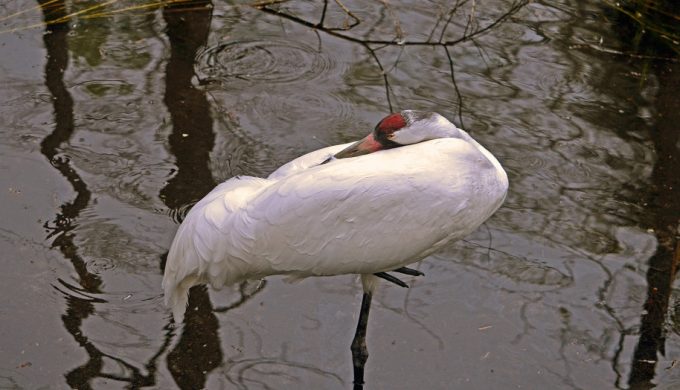Due to the COVID-19 pandemic, the number of young whooping cranes which will be released this fall by breeding facilities has been drastically reduced. At present, approximately 825 of these rare of cranes exist. According to reports, all of these birds are descended from 15 which survived hunters and habitat loss in 1941, continuing breeding in Wood Buffalo National Park (the largest of its kind in Canada) and wintering in Aransas, Texas.
As a result of the coronavirus, zoos as well as other places which were sites for breeding activities of the endangered whooping cranes have had to cut back on both their staff sizes as well as the techniques that were used to boost the birds’ numbers. Artificial insemination and hand-rearing the chicks (where their keepers wear baggy white “crane costumes” to cover them from head to toe, and actually manipulate hand puppets that appear like crane heads for the teaching of foraging) were programs that were reduced due to pandemic closure procedures.

Photo: @AngelsLight via Twenty20
Whooping cranes are known as the tallest birds in North America, standing five feet in height. They have black feet and red caps on top of their heads, and their feathers are white with black tips on their wings, which span seven feet! When they mate, it’s for life, and at present, U.S. biologists have been working on establishing other flocks, should anything happen to one in particular. Subsequently, there are 75 of them in a flock in Louisiana, as well as a flock of 85 which were taught to migrate by following an ultralight aircraft, from Wisconsin to Florida.

Photo: @ohheckorama via Twenty20
COVID-19 is anticipated to cut roughly 37 percent from the budget for raising the whooping cranes, which is the equivalent of approximately $21 million. This has resulted in staff cuts, which requires that keepers perform added duties and have less time to complete other activities for the breeding and care of the birds. In the meantime, breeding sites such as the Dallas Zoo have small numbers to work with. The off-site breeding facility in North Texas entails 2.5 acres. Birds that arrived there in August 2019 were selected as likely to breed on their own as well as being genetically well-suited, Although whooping cranes in the wild are still hatching chicks, those won’t get counted as part of the flock until they’re able to fly.




